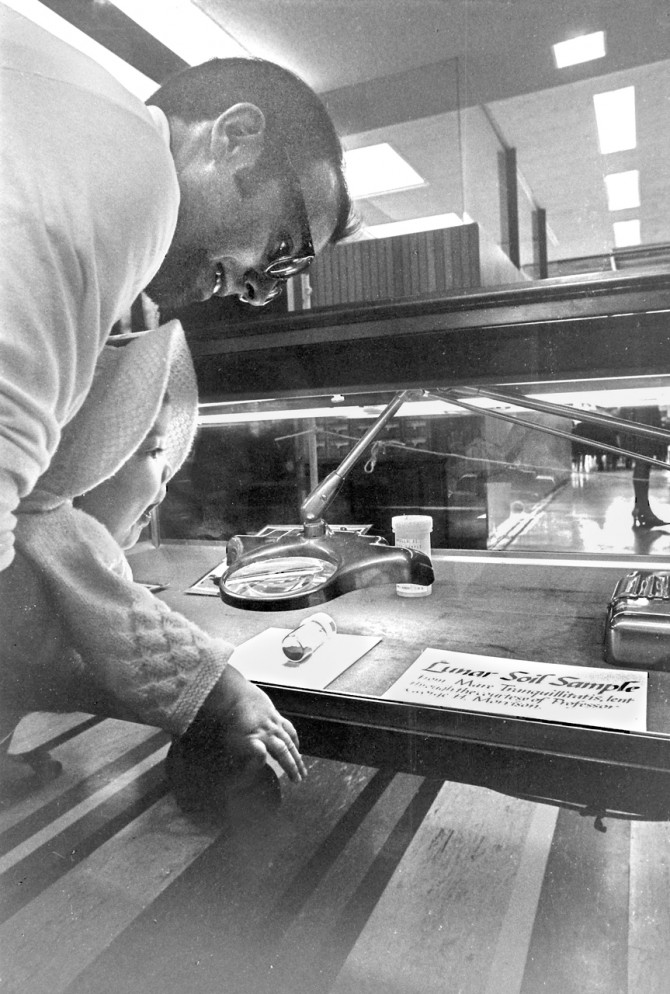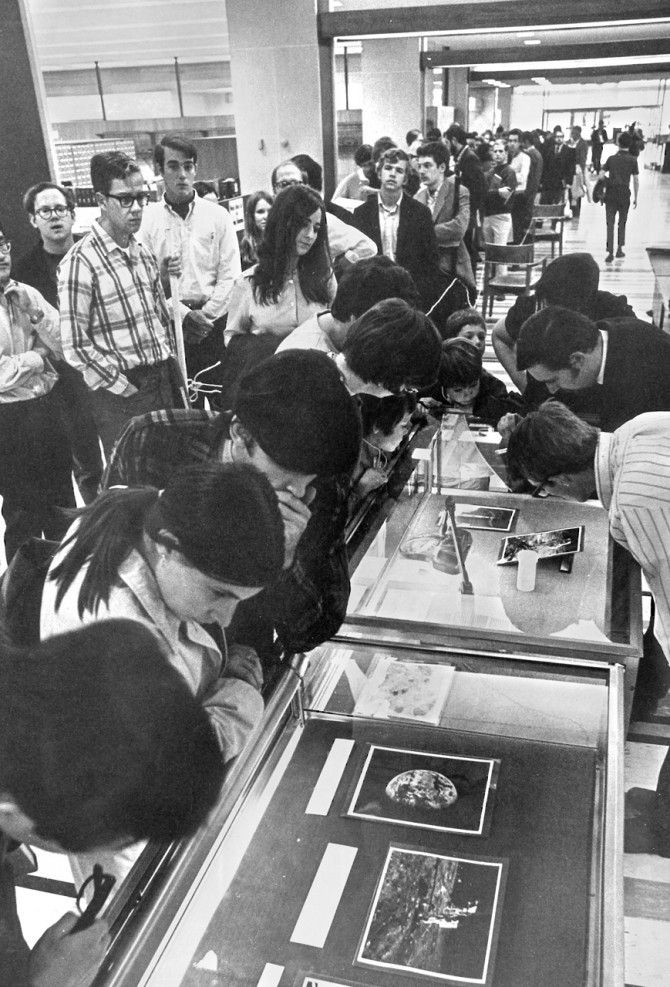
Apollo 11 Buzz Aldrin photographed his own footprint on July 20, 1969 as he stepped onto the powdery lunar surface. As early as 1955, the late Cornell astronomy professor Thomas Gold had suggested that the moon’s surface was covered in a fine rock powder. After the mission returned to Earth, Gold received a sample of the moon dust.
Cornell celebrates Apollo 11’s golden anniversary July 16-20
By Linda B. Glaser
Cornell will celebrate the 50th anniversary of the Apollo 11 moon landing with an afternoon of lectures and a panel with scientists about the future of planetary and exoplanetary discovery, a lecture by author Andrew Chaikin, music by the Aeolus Quartet and a display in Kroch Library.
On July 20 – the actual anniversary of astronauts Neil Armstrong and Buzz Aldrin descending from the Eagle spacecraft onto the lunar surface – the afternoon event “From the Moon to Mars and Beyond” will start at 2 p.m. in Call Auditorium, Kennedy Hall.
The program begins with a lecture, “Apollo 11 Plus 50: Context, Personal Recollections and Why It Succeeded,” by visiting scientist Peter Thomas, and then a talk, “Exploring Mars: Past, Present and Future,” by Michael Mellon, principal research scientist in Cornell’s astronomy department. They will provide historical context of humanity’s lunar and Mars explorations and the implications of future endeavors.
An afternoon panel will discuss the long-term future of robotic and human space exploration, starting at 3:20 p.m., and it will feature members of Cornell’s Carl Sagan Institute:
- Jonathan Lunine, the David C. Duncan Professor in the Physical Sciences and chair of the astronomy department;
- Nikole Lewis, assistant professor of astronomy and Sagan Institute deputy director; and
- Mason Peck, professor of mechanical and aerospace engineering and former NASA chief technologist.
“Apollo embedded an idea in our culture that space is ours,” said Peck. “Now, at long last, grandkids of Apollo are rethinking space, taking ownership of it once more, democratizing access to it and working to make space our permanent home.
“In space startups from SpaceX to Planet Labs, students are launching their own spacecraft. The discovery of new worlds are the Apollo missions of this decade. I’d argue that it is all thanks to the Apollo missions that ‘came in peace for all mankind,’” Peck said.
Event sponsors include the Department of Astronomy in the College of Arts and Sciences, Cornell Center for Astrophysics and Planetary Science, Sibley School of Mechanical and Aerospace Engineering, Carl Sagan Institute and Cornell’s Spacecraft Planetary Imaging Facility.
In the week leading up to “From the Moon to Mars and Beyond,” Cornell’s School of Continuing Education and Summer Sessions offers the following free celebratory events:
- July 16 – “Mysterium,” a concert by the Aeolus Quartet in a program that celebrates Apollo 11, 7 p.m. in Sage Chapel. The quartet features violinists Nicholas Tavani and Rachel Shapiro, violist Caitlin Lynch, and cellist Alan Richardson, who met as graduate students at the Julliard School. They will perform “Tenebrae” by Oswaldo Golijov, who was inspired by the famed “Pale Blue Dot” photo taken by Voyager 1. Additionally, the quartet will play “Mysterium,” by modern-day composer Alexandra Bryant, and the group will finish with Beethoven’s String Quartet No. 14, Op. 131.
- July 17 – “Apollo Plus 50: Why the Moon Landing Still Matters,” a lecture by Andrew Chaikin, author of “A Man on the Moon: The Voyages of the Apollo Astronauts,” 7 p.m., Call Auditorium, Kennedy Hall. Chaikin will revisit his one-on-one interviews with Apollo 11 astronauts the late Neil Armstrong, Buzz Aldrin and Mike Collins.
- July 19 – Arthur B. and the Planetary Mix will bring a classic R&B sound they call “celestial grooves for the celebration of life” to Cornell’s Arts Quad at 7 p.m. (Rain location: Rhodes-Rawlings Auditorium in Klarman Hall.)
In addition to the music and lectures, the Division of Rare and Manuscript Collections in Kroch Library offers an Apollo 11 display this summer. It highlights a notebook by the late Ernest Sternglass ’44, M.S. ’51, Ph.D. ’53, whose research led to electron amplification, resulting in a highly sensitive TV camera tube to place inside a video camera. This allowed hundreds of millions of people on July 20, 1969, to watch lives images of the Apollo 11 astronauts walking on the moon.
Linda B. Glaser is a staff writer for the College of Arts and Sciences.
Media Contact
Get Cornell news delivered right to your inbox.
Subscribe


